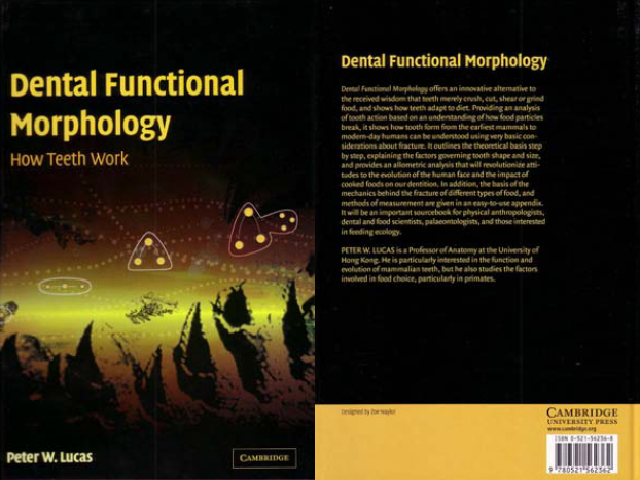Lucas, P.W. 2004. Dental functional morphology. How teeth work. – Cambridge, Cambridge University Press
Abstract
First and foremost, there is no other up–to–date single–authored book on the subject of dental functional morphology, so in this right this book is valuable. Many edited volumes concerning the subject have been published over the years (Kurten, 1982; Teaford, et al., 2000), some of which are quite comprehensive and some which are spotty in coverage reminiscent of a symposium proceedings. This book is by no means spotty; it is thorough and clear. One might say that with such a general title its only weakness is its primary focus on mammalian dentitions, particularly those of primates. This is certainly understandable considering that the majority of the audience and courses taught on the subject of dental function are in anthropology. To start, Lucas includes a brief explanation of a recurrent image at the bottom corner of each right page: that of a profile of a tooth. For 159 pages, this little tooth image changes ever so slightly depicting the minor changes in cusp morphology from primitive acrodont dentition to a human molar. This is intended to be flipped through as a ‘flip–book’, making a moving picture of the changing morphology of dentition. While a minor bit of detail, this is just one of the many aspects of this book that make reading it so enjoyable. Read more...
Downloads




